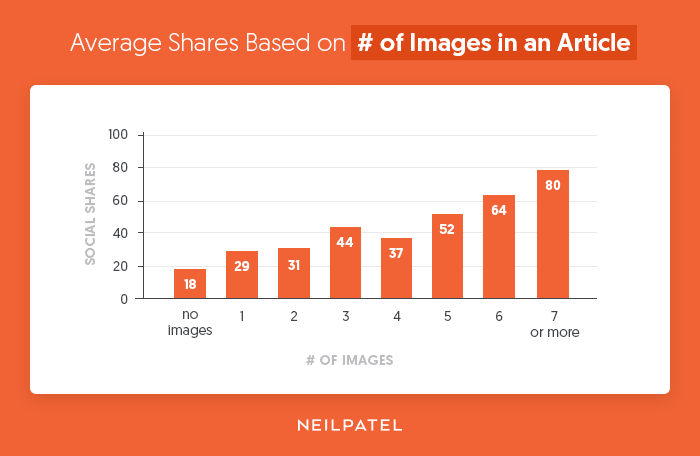
Content remains a crucial tool for attracting and retaining your target audience. However, deciding what to publish can be a challenging task. So, how can SEO and content strategy collaborate to enhance your marketing endeavors?
The Power of SEO Content
Recent research indicates that SEO content drives eight times more traffic than all other paid media combined. This demonstrates the significance of SEO in modern content strategies.
Optimizing Your Content Strategy
Here are some key takeaways to enhance your content marketing strategy:
- Understand and address your audience's needs by targeting the right customers, sharing relevant information, and utilizing long-tail keywords.
- Ensure your articles have engaging and user-friendly layouts as part of a robust SEO and content strategy.
- Focus on practical aspects like link building, optimizing existing content, and monitoring metrics to drive success.
Aligning SEO and Content for Audience Engagement
SEO goes beyond technical tweaks; it also involves the content you present to your audience. To compete effectively, it's essential to integrate SEO and content strategies. Here are some steps to get started:
Define Your Ideal Customer Persona
Prioritize understanding your target audience by creating detailed ideal customer personas. By giving your ideal customer persona a name, you can personalize and humanize your strategy.
Identify Relevant Topics
Utilize SEO tools to discover topics that resonate with your audience. While keywords are crucial, focus on creating valuable content around topics of interest rather than just keywords.

Utilize Long-Tail Keywords
Specific long-tail keywords tailored to your audience's needs can significantly impact your content's effectiveness. By addressing niche topics related to your offerings, you can attract the right audience.
Enhance Presentation and Readability
Effective content strategy involves not just what you write but also how you present it. Focus on creating visually appealing layouts and ensuring readability for both search engines and readers.
Diversify Content Formats
Explore various content formats like videos, images, and infographics to add value and engage your audience. Compiling content into an e-book can also boost your credibility and lead generation efforts.
Consistent Publishing and Monitoring
Regularly publish quality content and track its performance. Adjust your strategies based on analytics to optimize results and meet your audience's evolving needs.
Revamp Old Content and Focus on Link Building
Revise and update old content to improve its relevance and ranking. Additionally, prioritize link building to enhance your site's credibility and visibility.
Collaborate with Experts
If you need assistance in maximizing your content and SEO efforts, consider partnering with professionals who can provide valuable insights and strategies tailored to your business.
By aligning SEO and content strategies effectively, you can elevate your marketing initiatives and reach your target audience more efficiently.
Frequently Asked Questions
What are the 7 steps to an internet marketing strategy?
Internet marketing strategies help businesses achieve their goals through online media. These seven steps are planning, research and implementation. Monitoring, analysis, optimization, optimization, and evaluation are the key components. Each step is crucial for internet marketing success and should be done regularly.
- Planning – This step involves identifying your target audience and developing a plan for how you want to reach them. It is important to consider who may buy your product or service, and what it costs.
- Research helps you understand your customer's needs and interests, so you can determine which products or services best match their expectations. Research also provides valuable insights into trends and consumer behavior.
- Implementation is as simple as choosing a platform such Facebook and deciding where to put your ads. Once you have chosen your platforms, it's important to ensure that they are correctly configured. Also, decide whether to pay per click or spend money on advertising.
- Monitoring – This is how you can see if your efforts have been successful. Google Analytics provides analytics tools that allow you to track traffic flows and conversion rates.
- This allows you compare results to benchmarks as well as previous performance levels. If you find areas underperforming, this step guides how to improve.
- Optimization – Making changes to your website in order to attract more visitors is called optimization. You can add new features or alter how users navigate through your site.
- Evaluation – Evaluate the performance of your campaign. Are there areas that could be improved? If not then you may not have met your goal. You'll still need to address any issues.
Why is it so important for your brand to be defined?
A brand is simply the promise your company makes to its clients. Your brand is a promise that your company will deliver certain benefits and qualities that will make you stand out from the rest. Your brand is what differentiates you from others in the same industry.
A brand establishes your authority and credibility. Potential customers recognize your logo as a sign that you stand behind your products and services. Because you have earned their trust, they will trust you.
Your brand is also an expression of your company's culture. Your brand is likely to reflect your passion for your product/service if your employees are passionate about it.
Your brand isn't just words or pictures. It's a promise that your company lives up to. It is a promise to deliver value to customers.
You should take into consideration several aspects when creating your brand. First, you need to choose a name which clearly describes the company's mission. Sweet Dreams Bakery is a good example of a bakery name. You'd choose DreamSpark Software if you were running a software firm.
Next, decide how you want your brand to be represented. Will you use a recognized symbol? Will you use colors that complement your corporate image? Will you use logos
Finally, consider the perception of your brand by your target audience. Is it possible to portray yourself as friendly, helpful, and approachable? Will you be trustworthy and professional looking? Are you able to communicate your knowledge and experience?
These are all important questions you should ask before building your brand.
What are the four types of marketing?
Marketing is divided into four categories: Traditional Advertising, Direct Mail, Public Relations, and Digital Marketing. Each goal has a different purpose and should each be used for its intended purpose. These can be combined to help you reach your goals.
Statistics
- A poll earlier this year found that 14% of older Gen Z's had bought an item in the previous six months based on an influencer's recommendation. (influencermarketinghub.com)
- Many experts recommend you share 20% of your promotional content and 80% of other valuable content you find. (marketinginsidergroup.com)
- According to statistics, 60% of online shoppers worldwide actively search for coupons before purchasing from a virtual shop. (influencermarketinghub.com)
- From 2020 to 2022, eMarketer predicts that digital marketing will grow by 36% and take up 54% of marketing budgets! (marketinginsidergroup.com)
- Meanwhile, a PartnerPath poll found that co-marketed ads help 68% of consumers arrive at a buying decision before even speaking to a salesperson. (influencermarketinghub.com)
External Links
statista.com
- TikTok quarterly first-time Installs 2021
- Statista – E-commerce around the World – Statistica – Facts & Statistics
influencermarketinghub.com
hubspot.com
neilpatel.com
How To
Top Brands Offer Online Marketing Tips & Tricks
When creating content for online marketing, ensure it's relevant to your audience. Your audience won't care if you don't offer your product or service. Why would they care about your blog content?
Your website should be focused on fashion accessories. Not general web design tips.
Promote your business using social media platforms, such as Facebook, Twitter or LinkedIn. Social media sites enable businesses to communicate and interact with their customers.
It's also a great way to get in touch with clients, both current and potential.
You should create content that engages users, encourages them to share and encourages them. Shared content has a tendency to reach more people and increase your site's traffic.
Regular updates keep your content relevant. It's better to post once a week or daily than every month.
Posted content usually receives more engagement because readers expect to see new content.
Your content should contain links to your homepage. This will help visitors find other resources on your site.
Mobile-friendly content is essential. Mobile devices now outnumber desktop computers. According to a recent survey, more than 50% of internet users access websites via their smartphones.
Test it on various smartphone and tablet browsers to ensure your content looks good when viewed on small screens. In conclusion, the mobile-first approach should be a no-brainer for any website owner or developer.
It's about more than just aesthetics. Mobile websites convert more often than desktop websites. Not only are they easier to navigate, but they also tend to load faster because of the smaller size of the site.
Create content that matters to your audience.
————————————————————————————————————————————–
By: 6428
Title: How SEO and Content Strategy Can Improve Your Marketing Efforts
Sourced From: internetlib.org/9-keys-to-an-effective-seo-and-content-strategie/
Published Date: 3/15/2023 4:34:03 PM
